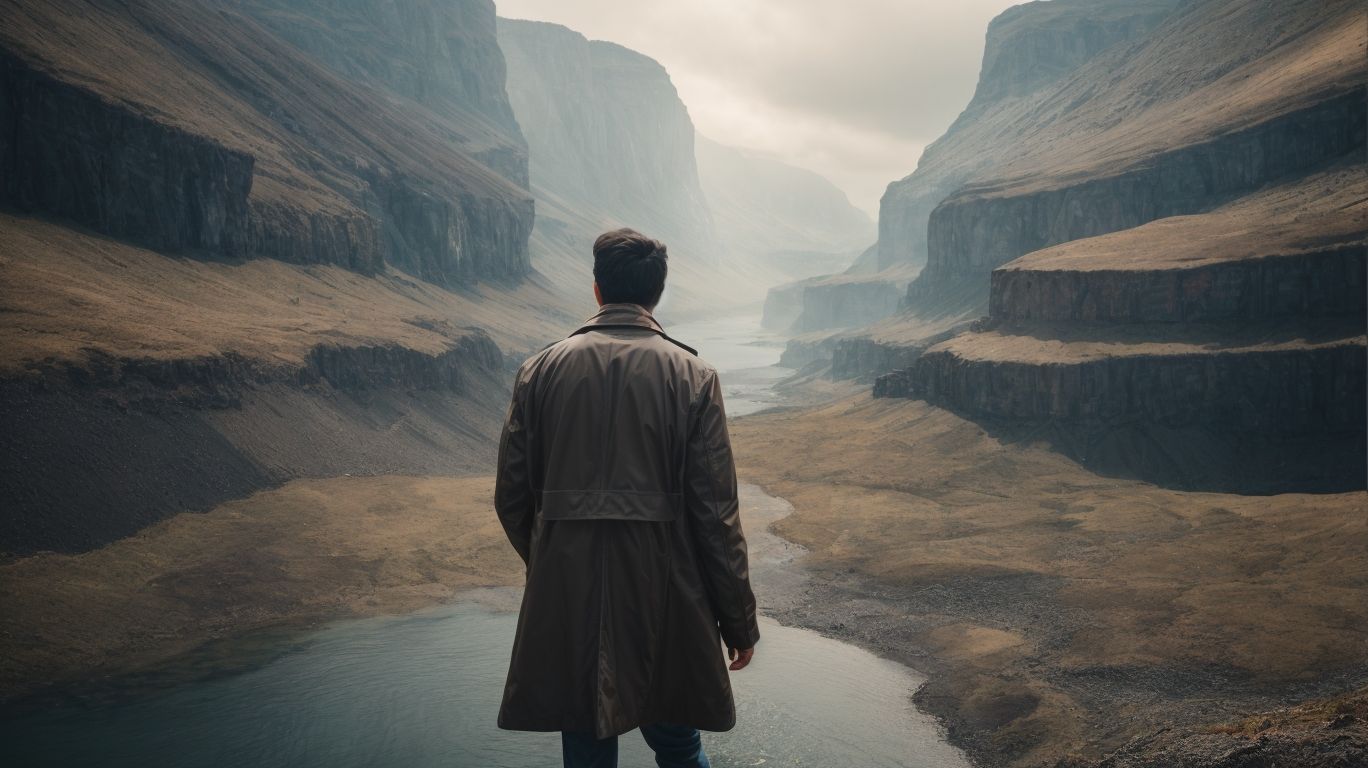Are you tired of falling prey to online scams and viruses that threaten your personal information? Protect yourself by learning how to identify and steer clear of malicious websites and ads. This crucial information will help you browse the internet safely and confidently. Don’t let cyber threats hold you back from using the internet to its full potential.
What Are Malicious Websites and Ads?
Malicious websites and ads are dangerous online hazards that can jeopardize your privacy and security. These deceptive entities aim to exploit users by spreading malware or stealing personal information. They often masquerade as legitimate brands or offer enticing deals to deceive unsuspecting users.
Some red flags to watch out for include:
- suspicious URLs
- poorly designed websites
- excessive pop-ups
- unsolicited requests for personal information
To safeguard yourself, it is important to:
- use a trusted antivirus software
- regularly update your browser and devices
- be cautious when clicking on links or downloading files
How Can You Spot a Malicious Website or Ad?
As our online activity increases, so does the threat of falling victim to malicious websites and ads. But how can you spot these potential dangers before it’s too late? In this section, we will go over some key warning signs to look out for. From suspicious URLs to pop-up windows, poor website design, and unprofessional content, we’ll cover everything you need to know to keep yourself safe while browsing the internet. Stay tuned for some valuable tips and tricks on how to spot and avoid malicious websites and ads.
1. Suspicious URLs
Suspicious URLs can be indicators of malicious websites or ads. To identify them, follow these steps:
- Check the domain name. Look for misspellings or slight variations of reputable websites.
- Look for excessive use of numbers or random characters in the URL.
- Pay attention to the website’s security indicators. Make sure it begins with “https://” and has a padlock icon.
- Beware of URLs that redirect to unknown or unexpected domains.
- Be cautious of shortened URLs, as they can conceal the true destination.
In 2004, cybercriminals utilized suspicious URLs to launch a widespread phishing attack targeting PayPal users. By replicating PayPal’s login page, they acquired sensitive information from unsuspecting victims. This incident emphasized the importance of thoroughly examining URLs to safeguard against online threats.
2. Pop-up Windows
Pop-up windows on websites can be indicators of malicious intent, as they can contain dangerous links or malware. To spot and avoid such pop-ups, follow these steps:
- Enable pop-up blockers in your web browser settings.
- Be cautious when visiting unfamiliar websites or clicking on suspicious links.
- Avoid interacting with pop-up Windows that ask for personal information.
- Close any unexpected pop-up windows immediately.
By taking these precautions, you can protect yourself from potential malware infections, phishing scams, and other risks associated with interacting with pop-up windows on malicious websites or ads. Stay vigilant and keep your online activities secure.
3. Poor Website Design
Poor website design can be a red flag for a malicious website or ad. To help identify and avoid potential risks, consider these steps:
- Look for inconsistent or outdated design elements, such as mismatched colors or fonts.
- Check for broken links or missing images, which may indicate a poorly maintained or suspicious website.
- Pay attention to excessive ads or pop-ups that disrupt the user experience, as this could be a tactic used by malicious websites.
- Be cautious of websites with poor grammar or spelling errors, as this can be a sign of unprofessional content.
By being aware of these indicators of poor website design, you can better protect yourself from malicious websites and ads.
4. Unprofessional Content
Unprofessional content is a clear indication of a malicious website or advertisement. Pay attention to poor grammar, spelling mistakes, excessive use of capital letters, and unappealing visuals. These elements suggest a lack of professionalism and credibility, making it important to avoid interacting with such content. Doing so can lead to malware infections, phishing scams, identity theft, and financial loss.
To protect yourself from these threats, consider using ad blockers, keeping your software updated, being cautious when clicking on links or downloading files, using antivirus software, and educating yourself on how to identify and avoid malicious websites and ads.
What Are the Risks of Interacting with Malicious Websites and Ads?
The internet is a vast and ever-expanding landscape, but it is not without its dangers. Malicious websites and ads can pose a serious threat to your personal information and financial security. In this section, we will examine the various risks associated with interacting with these deceptive online entities. From malware infections to phishing scams, identity theft, and financial loss, we will discuss the potential consequences of falling prey to these malicious tactics.
1. Malware Infections
Malware infections can have devastating effects on your devices and personal information. To protect yourself, follow these steps:
- Keep your software and operating system up to date to prevent vulnerabilities.
- Use ad blockers to reduce the chances of encountering malicious ads.
- Be cautious when clicking on links or downloading files, especially from unknown sources.
- Use antivirus software to detect and remove malware.
- Educate yourself on how to spot and avoid malicious websites and ads.
History shows that malware infections have been a persistent threat, with cybercriminals constantly evolving their tactics. The first known computer virus, “Creeper,” was created in the early 1970s as an experiment. Since then, malware has become more sophisticated, making it crucial to stay vigilant and employ preventive measures.
2. Phishing Scams
Phishing scams are a prevalent form of online fraud that attempts to trick individuals into disclosing sensitive information such as usernames, passwords, or financial details. To safeguard yourself against phishing scams, follow these steps:
- Be cautious of unsolicited emails or messages requesting personal information.
- Verify the legitimacy of websites by carefully examining their URLs and searching for misspellings or unusual characters.
- Avoid clicking on suspicious links or downloading attachments from unfamiliar sources.
- Keep your antivirus software and operating system up to date to protect against known phishing threats.
- Stay informed about the latest phishing techniques and educate yourself on how to identify and avoid them.
3. Identity Theft
Identity theft is a serious risk associated with interacting with malicious websites and ads. To protect yourself, follow these steps:
- Be cautious with personal information: Avoid entering sensitive data on unfamiliar websites.
- Use strong passwords: Create unique and complex passwords for each online account.
- Enable two-factor authentication: Add an extra layer of security to your accounts.
- Regularly monitor your accounts: Check your bank and credit card statements for any unusual activity.
- Keep your devices secure: Install reputable antivirus software and keep your operating system up to date.
Fact: In 2020, identity theft was one of the most common types of cybercrime, affecting millions of individuals worldwide. Stay vigilant and protect your personal information.
4. Financial Loss
One of the potential risks of engaging with malicious websites and ads is financial loss. Scammers may deceive users into divulging personal and financial information or making unauthorized transactions. To prevent financial loss, it is crucial to take necessary precautions such as utilizing ad blockers, regularly updating software, being cautious when clicking on links or downloading files, and having antivirus software. Educating oneself about the indicators of malicious websites and ads can also aid in avoiding financial scams. Remain vigilant and safeguard your finances from potential harm.
How Can You Avoid Malicious Websites and Ads?
In today’s digital age, the internet can be a dangerous place for unsuspecting users. Malicious websites and ads can pose a serious threat to your online security and personal information. However, with some caution and proactive measures, you can protect yourself from falling victim to these scams. In this section, we will discuss five ways to avoid malicious websites and ads, including using ad blockers, keeping your software up to date, being cautious when clicking on links or downloading files, using antivirus software, and educating yourself about potential threats. Stay informed and stay safe while browsing the internet.
1. Use Ad Blockers
Using ad blockers can greatly improve your online security and browsing experience. Follow these steps to get started:
- Install a reputable ad blocker extension or plugin on your web browser.
- Ensure that the ad blocker is set to block all types of ads, including pop-ups and banner ads.
- Regularly update the ad blocker to keep it effective against the latest advertising techniques.
- Configure the ad blocker’s settings to allow non-intrusive ads on trusted websites, supporting their revenue stream.
By utilizing ad blockers, you can avoid intrusive ads that may contain malicious code or redirect you to suspicious websites, creating a safer online environment.
True story: A friend of mine encountered a pop-up ad while browsing a website, claiming to offer a free iPhone. He was skeptical and ignored the ad, continuing to browse without any issues. Later, he discovered that the ad was a phishing attempt designed to collect personal information. Thanks to his ad blocker, he avoided becoming a victim of identity theft.
2. Keep Your Software and Operating System Up to Date
Keeping your software and operating system up to date is crucial in protecting yourself from malicious websites and ads. Here are some steps to follow:
- Enable automatic updates for your operating system and software to ensure you have the latest security patches.
- Regularly check for updates manually if automatic updates are not enabled.
- Update your web browser to the latest version, as browsers often release updates with improved security features.
- Consider using a reputable security software that includes automatic updates for maximum protection.
Fact: Unpatched software and outdated operating systems are common vulnerabilities exploited by cybercriminals to gain unauthorized access to your devices and personal information.
3. Be Cautious When Clicking on Links or Downloading Files
When it comes to clicking on links or downloading files, it’s crucial to exercise caution to avoid falling victim to malicious websites and ads. Here are some important steps to follow:
- Verify the source: Double-check the sender or website before clicking on any links or downloading files.
- Hover over links: Hovering over a link reveals the actual URL, allowing you to assess its legitimacy.
- Look for HTTPS: Ensure that the website you’re visiting has a secure connection (HTTPS) when entering sensitive information or downloading files.
- Use trusted sources: Download files only from reputable websites or official app stores to minimize the risk of malware.
Remember, being cautious when clicking on links or downloading files is crucial to protect yourself from potential threats.
4. Use Antivirus Software
Using antivirus software is a crucial step in protecting your devices from malicious websites and ads. Here are some steps to follow:
- Research reputable antivirus software options that are compatible with your device.
- Download and install the chosen antivirus software.
- Run a full system scan to detect any existing malware or viruses.
- Set up automatic scans and updates to ensure continuous protection.
- Regularly update the antivirus software to stay ahead of new threats.
Remember, antivirus software is just one layer of defense. Practicing safe browsing habits and keeping your operating system and other software up to date are also essential in preventing malicious attacks. Stay vigilant and protect your digital security.
5. Educate Yourself and Stay Informed
Educating yourself and staying informed is crucial in protecting yourself from malicious websites and ads. Here are some steps to help you stay safe:
- Stay updated: Regularly research and stay informed about the latest threats and techniques used by cybercriminals.
- Recognize warning signs: Be aware of common indicators of malicious websites or ads, such as suspicious URLs, poor design, or unprofessional content.
- Verify sources: Double-check the legitimacy of websites or ads by verifying their reputation and trustworthiness.
- Use reliable security tools: Install and regularly update antivirus software and use ad blockers to provide an additional layer of protection.
Remember, staying informed is an ongoing process. Keep learning and adapting your online habits to stay one step ahead of cyber threats. Stay safe online!
Frequently Asked Questions
What is a malicious website or ad?
A malicious website or ad is a website or advertisement that has been designed to harm your computer, steal your personal information, or spread viruses and malware.
How can I spot a malicious website or ad?
There are a few common signs that can help you identify a malicious website or ad. These include suspicious pop-up windows, unusual or incorrect website URLs, and offers that seem too good to be true.
What should I do if I come across a malicious website or ad?
If you encounter a suspicious website or ad, do not click on any links or enter any personal information. Instead, close the window and run a virus scan on your computer. You can also report the website or ad to your internet service provider or the company hosting the website.
How can I avoid being targeted by malicious websites and ads?
To avoid being targeted by malicious websites and ads, it is important to have up-to-date antivirus and anti-malware software installed on your computer. It is also important to be cautious when clicking on links or downloading files from unknown sources, and to regularly update your web browser.
Can mobile devices be targeted by malicious websites and ads?
Yes, mobile devices can also be targeted by malicious websites and ads, so it is important to take the same precautions as you would on a computer. Make sure to only download apps from trusted sources and be cautious when clicking on links or ads while browsing on your mobile device.
Are there any tools or extensions that can help me avoid malicious websites and ads?
Yes, there are a variety of tools and extensions available that can help protect you from malicious websites and ads. These include ad blockers, anti-tracking extensions, and website reputation checkers. It is important to research and choose reputable tools and extensions from trusted sources.





